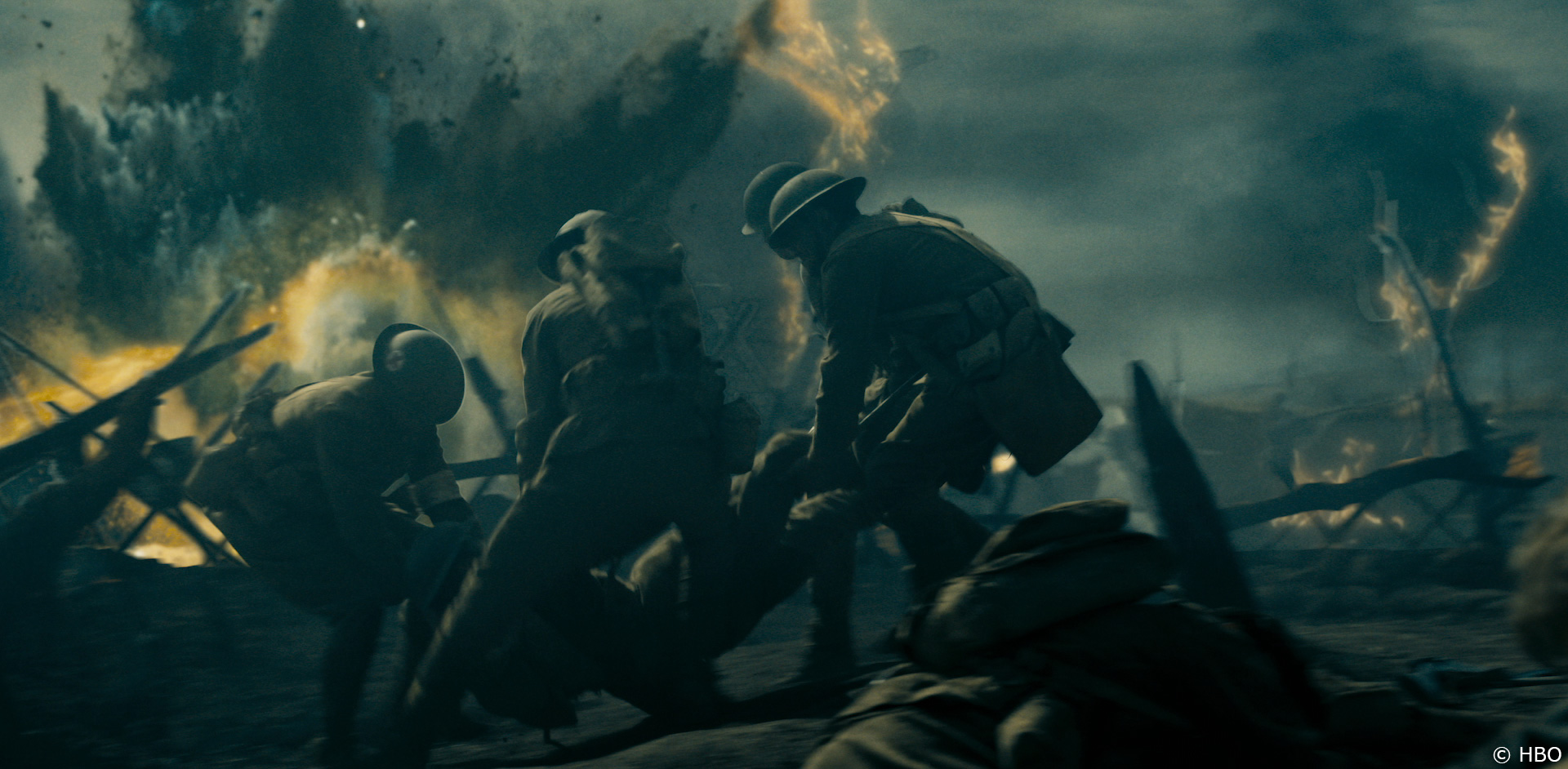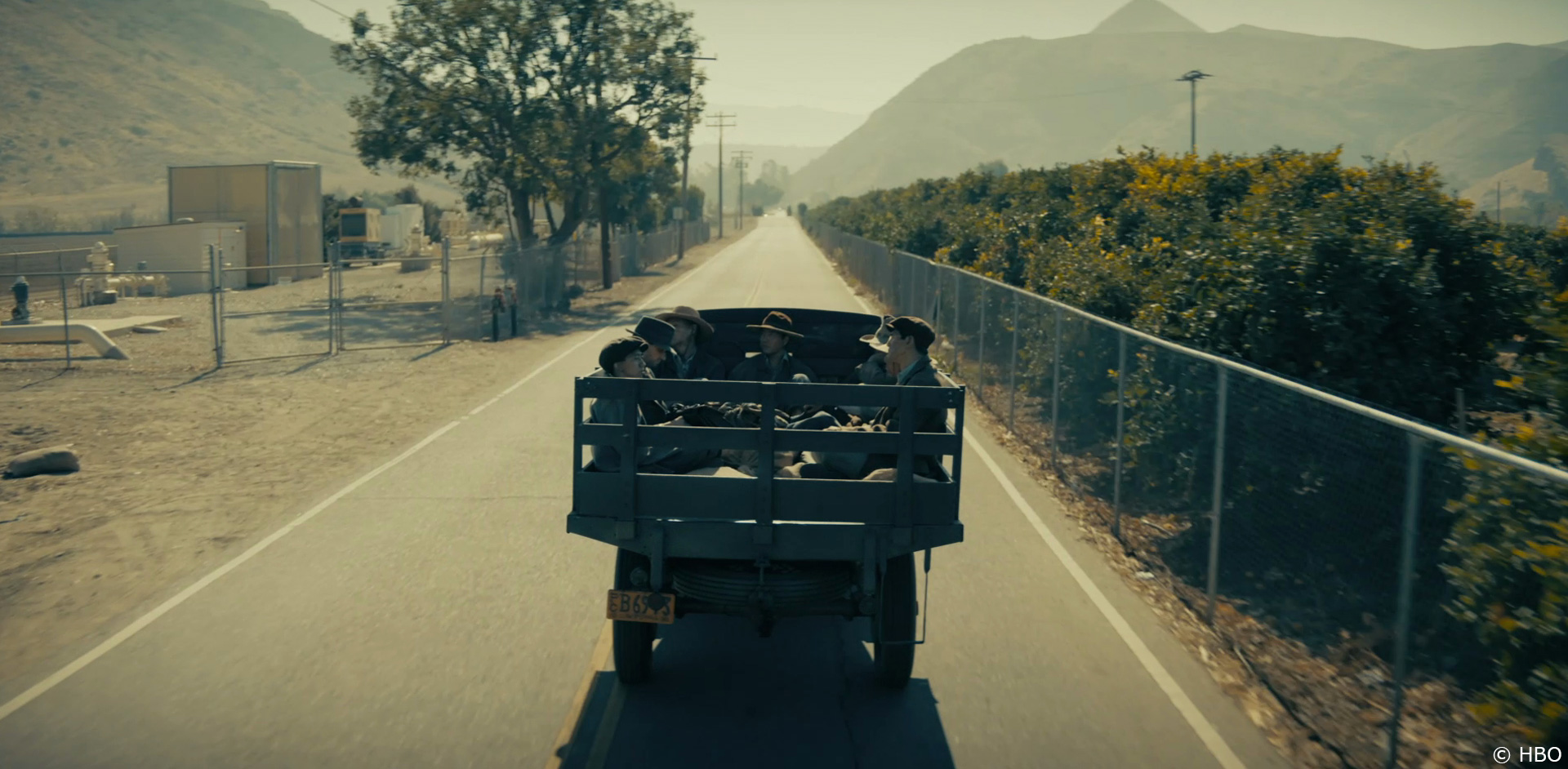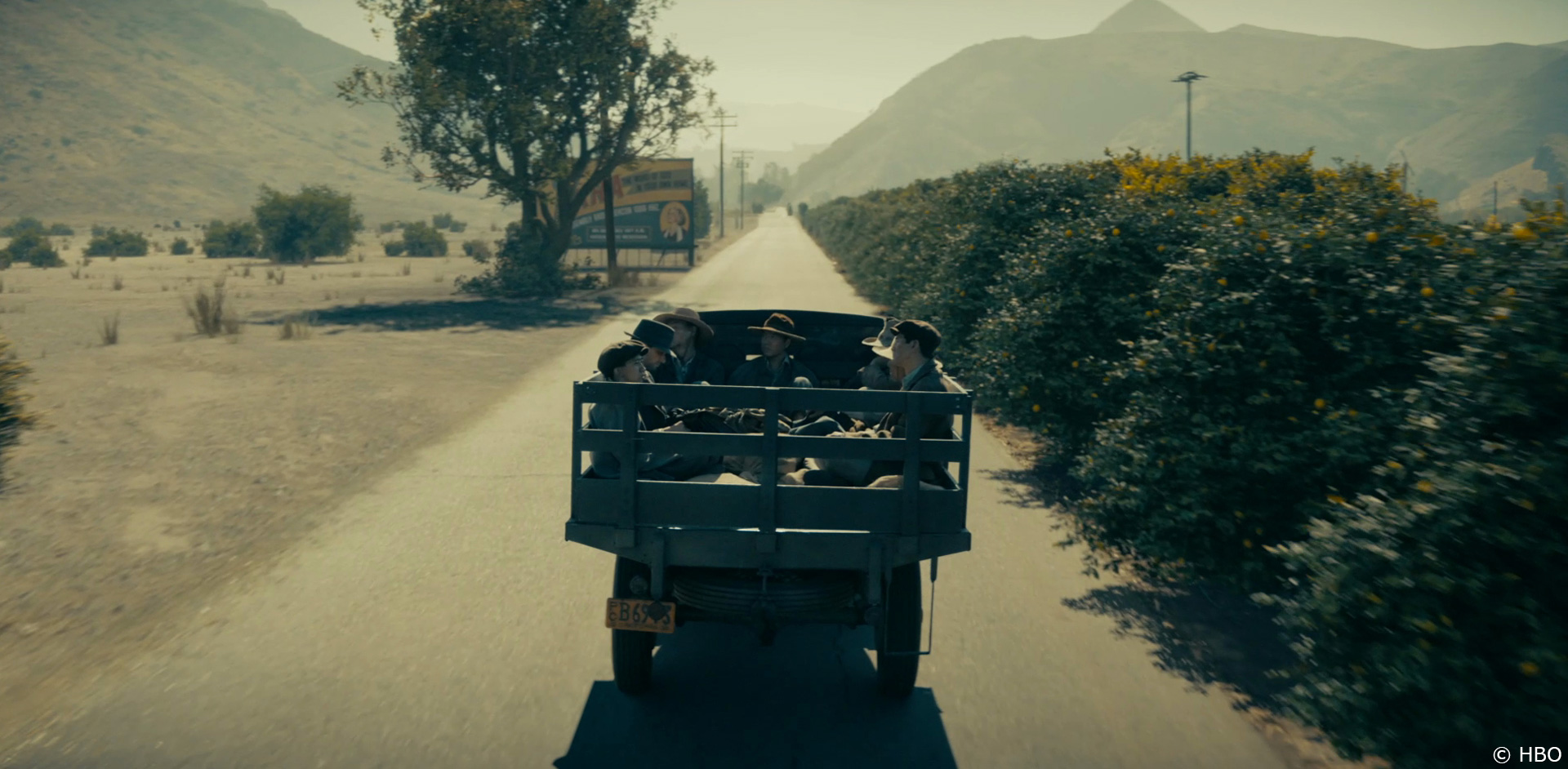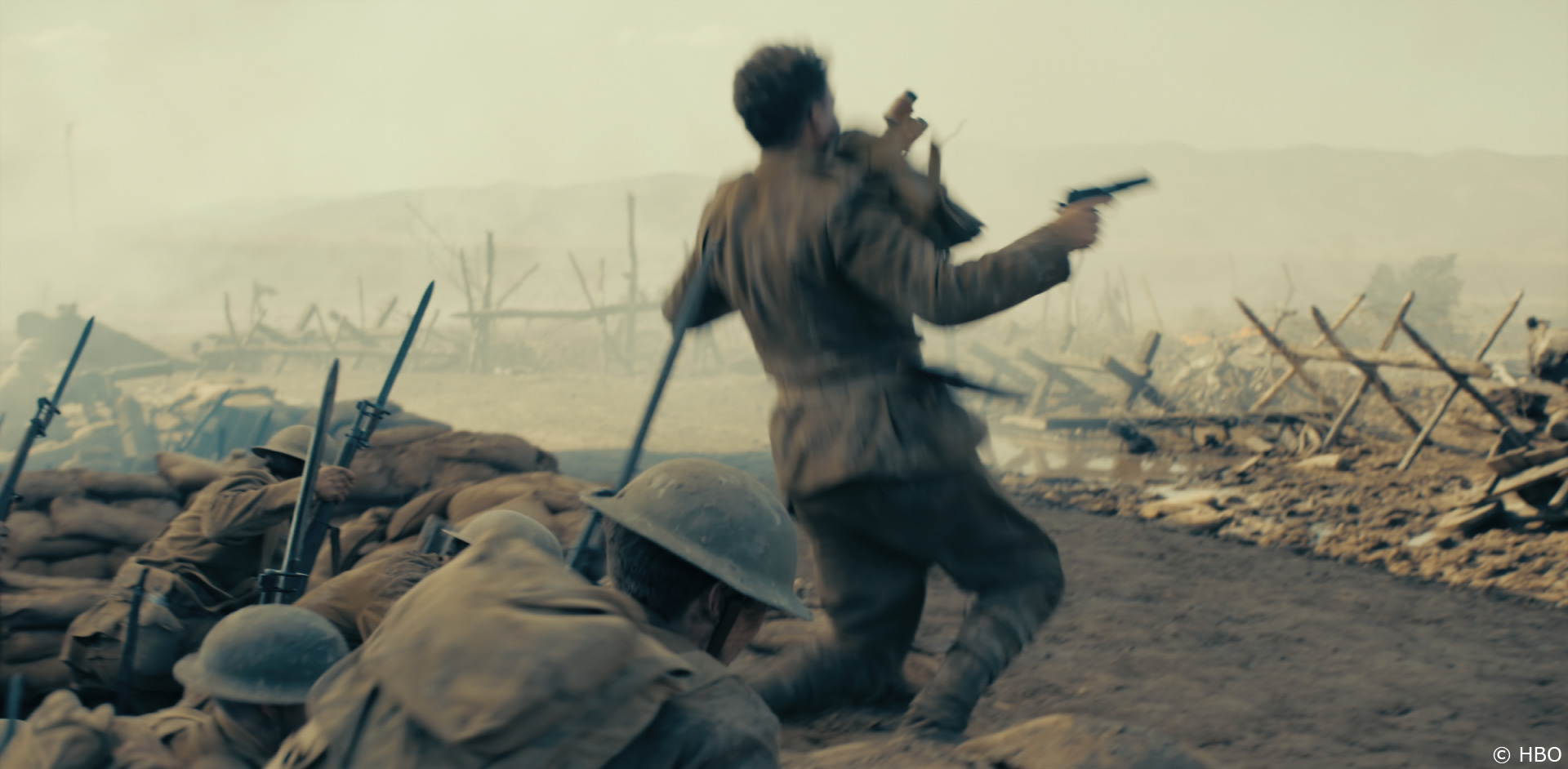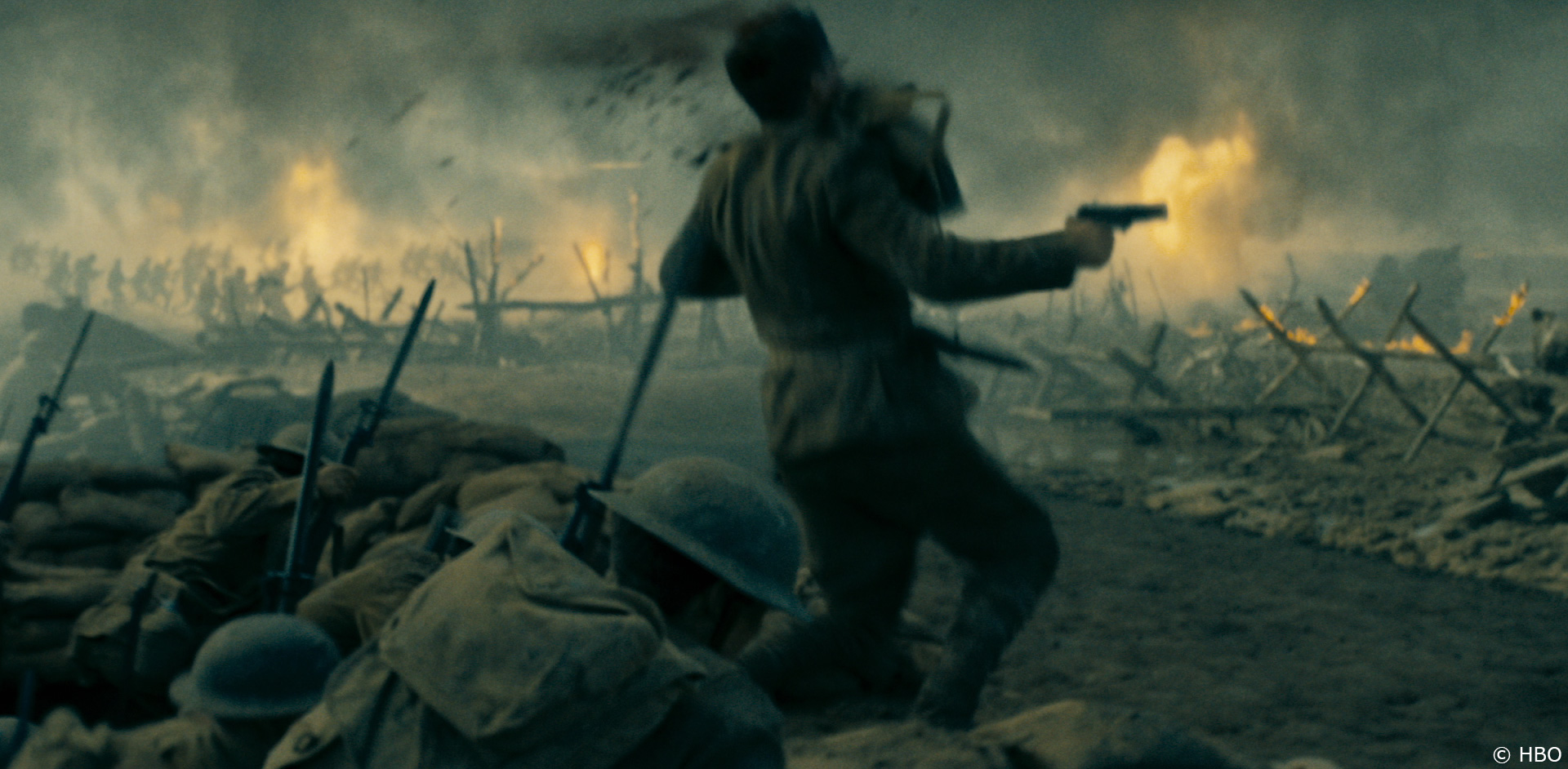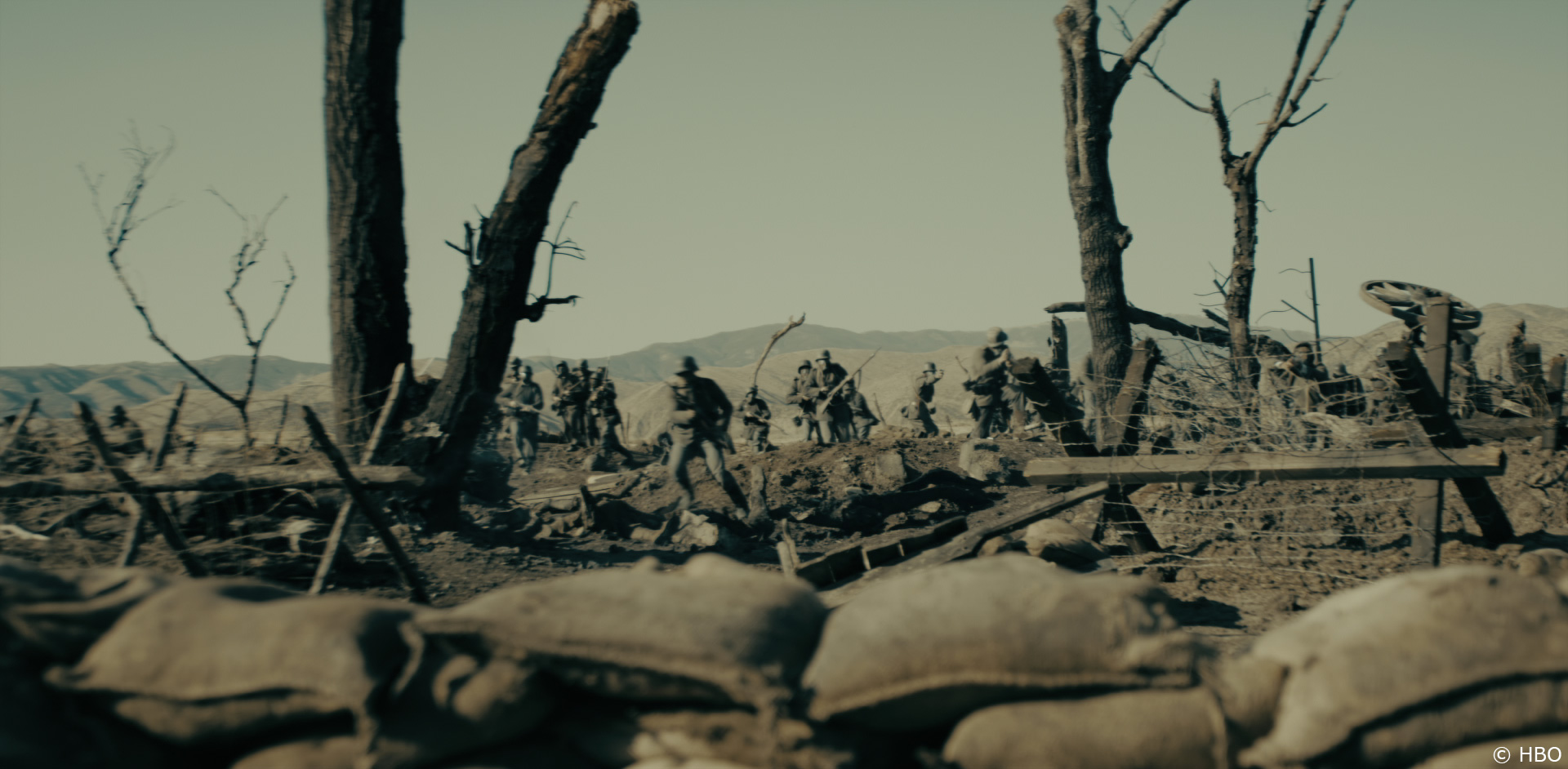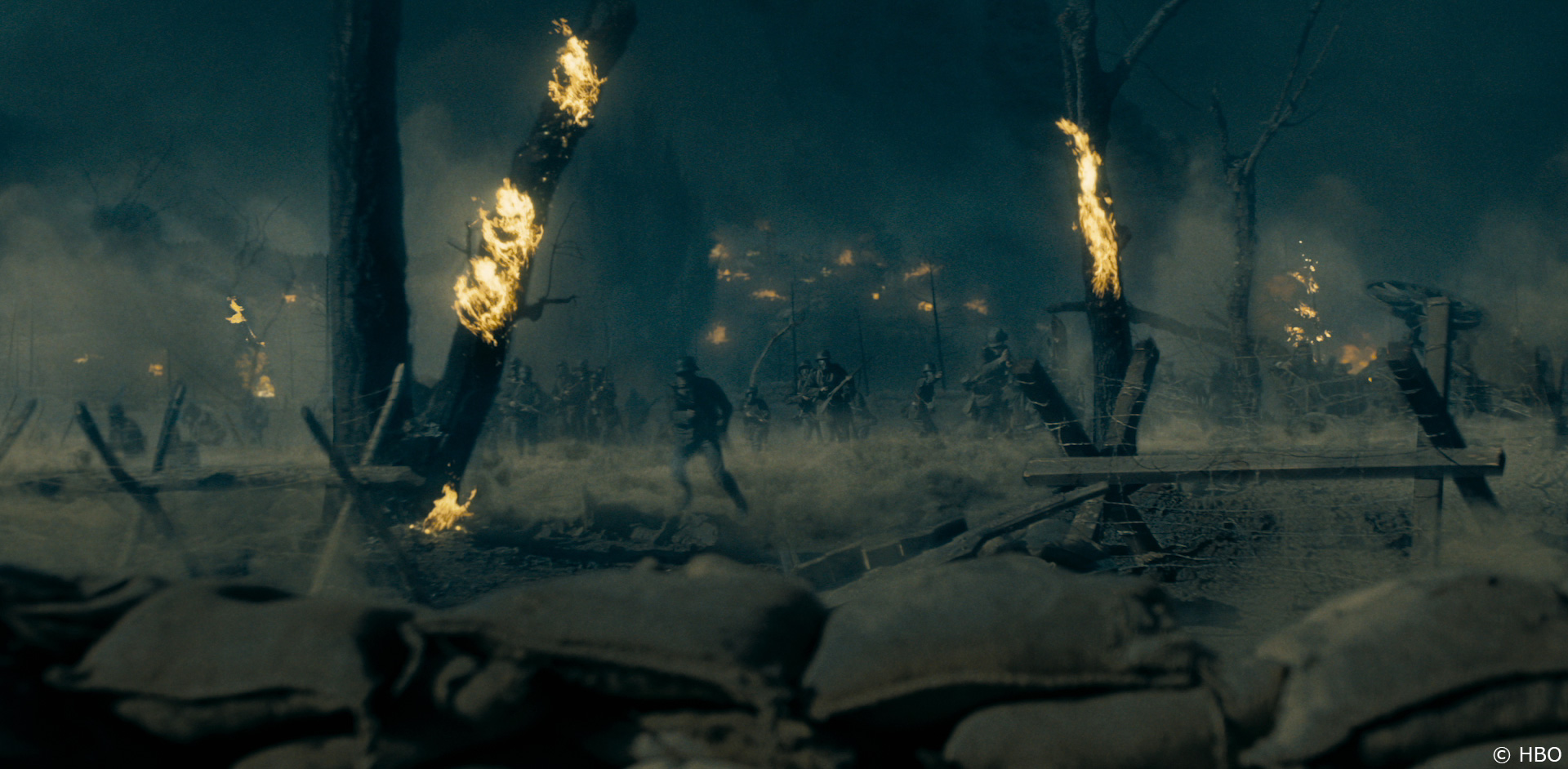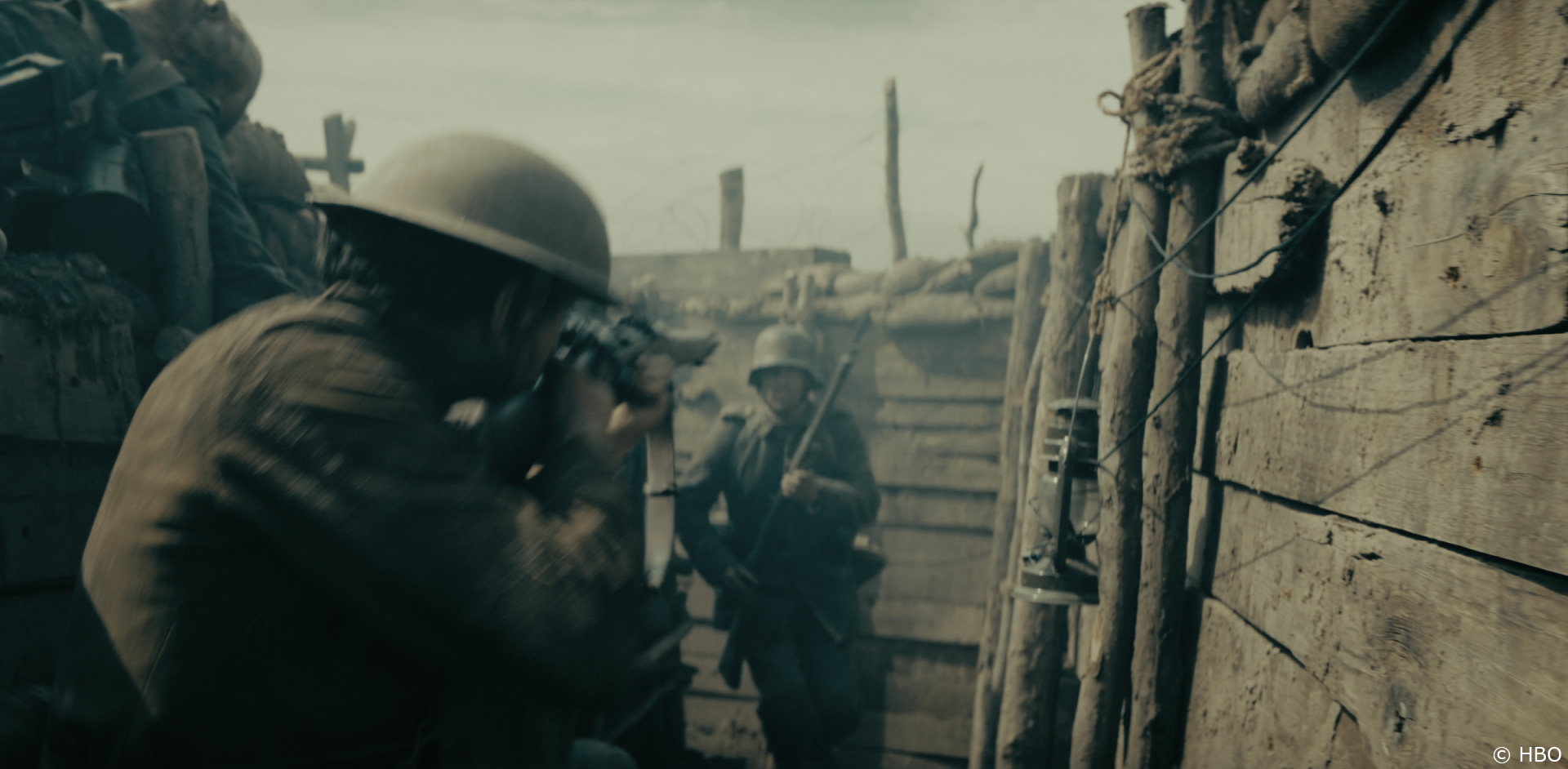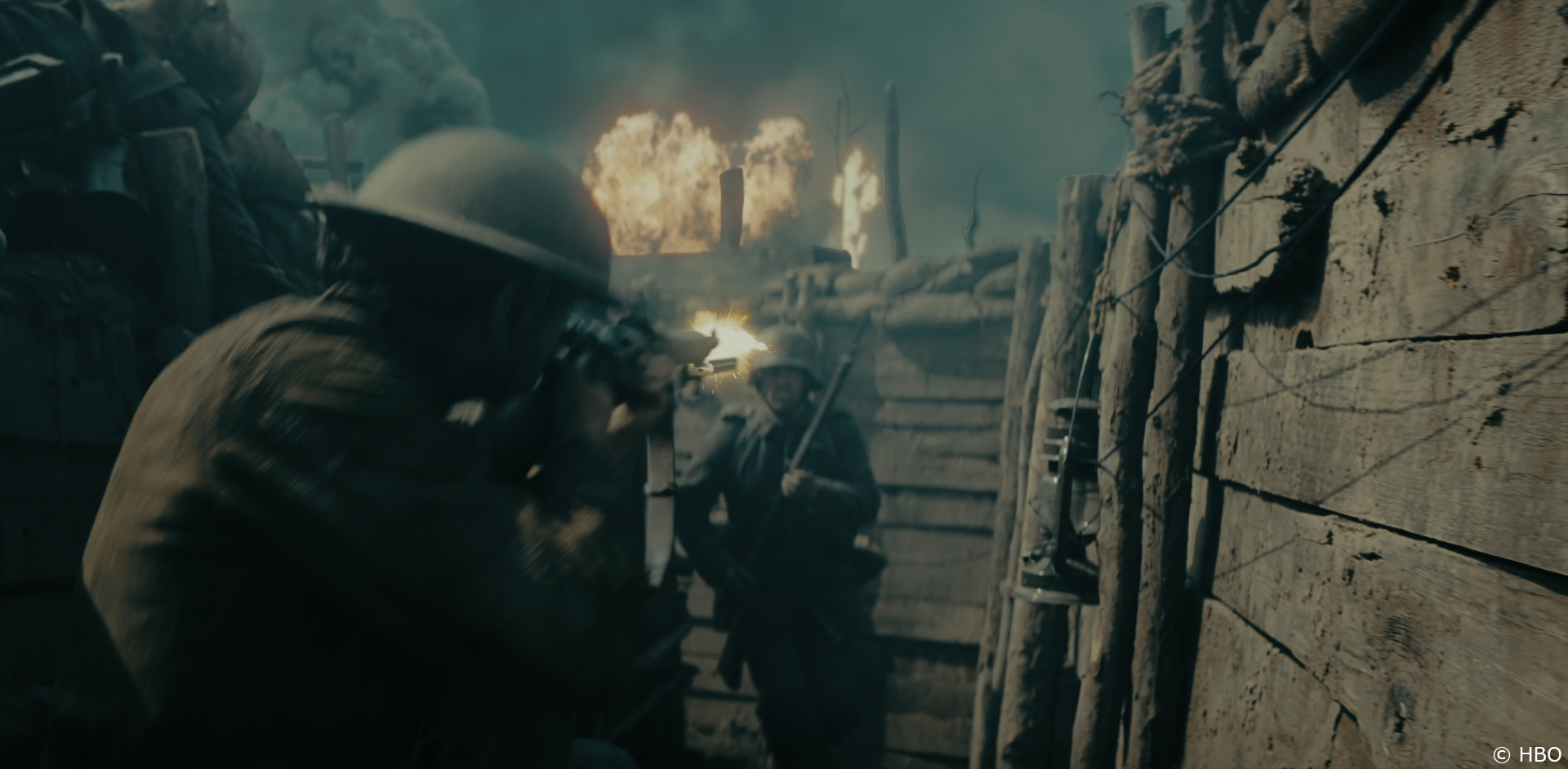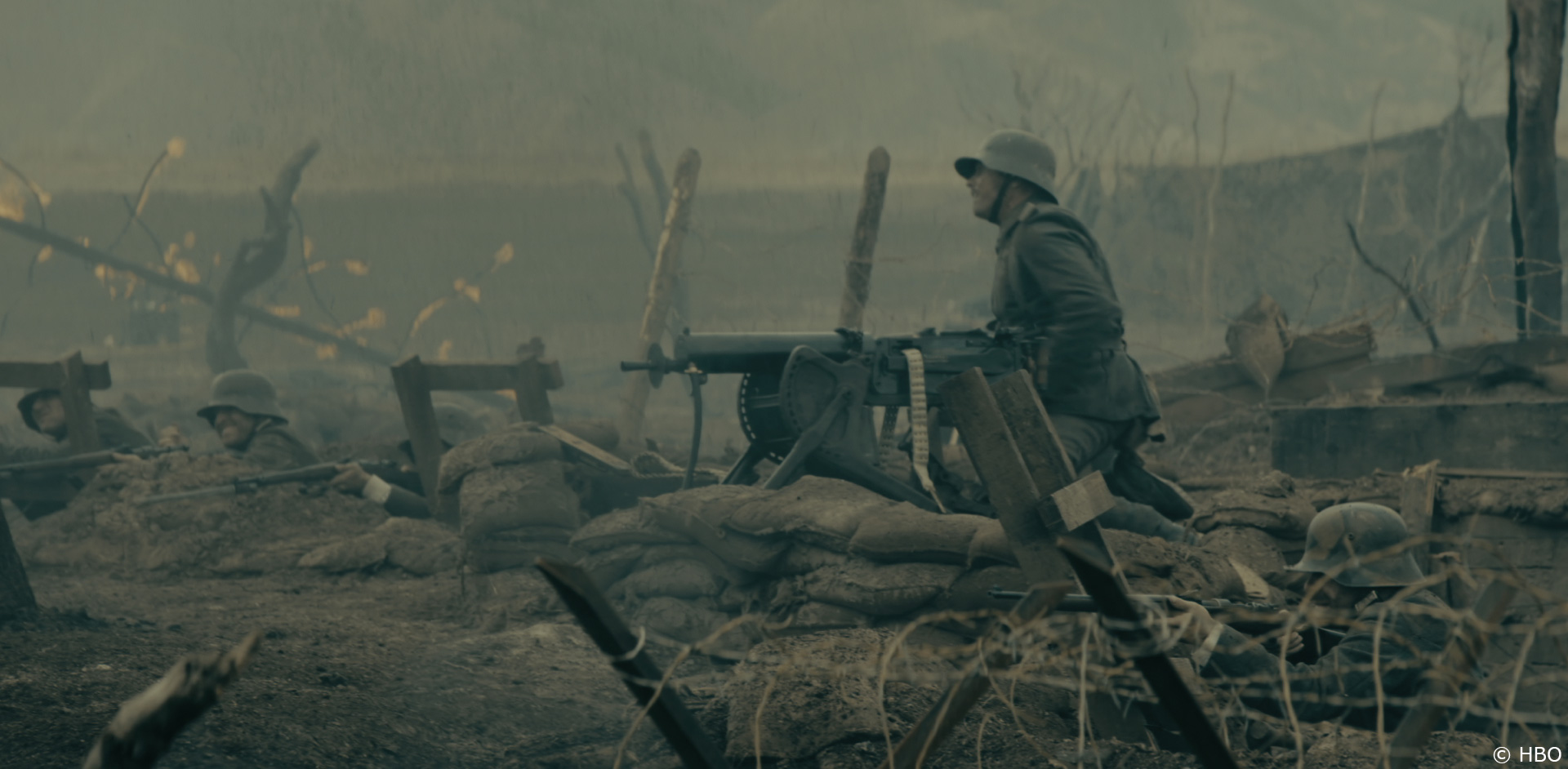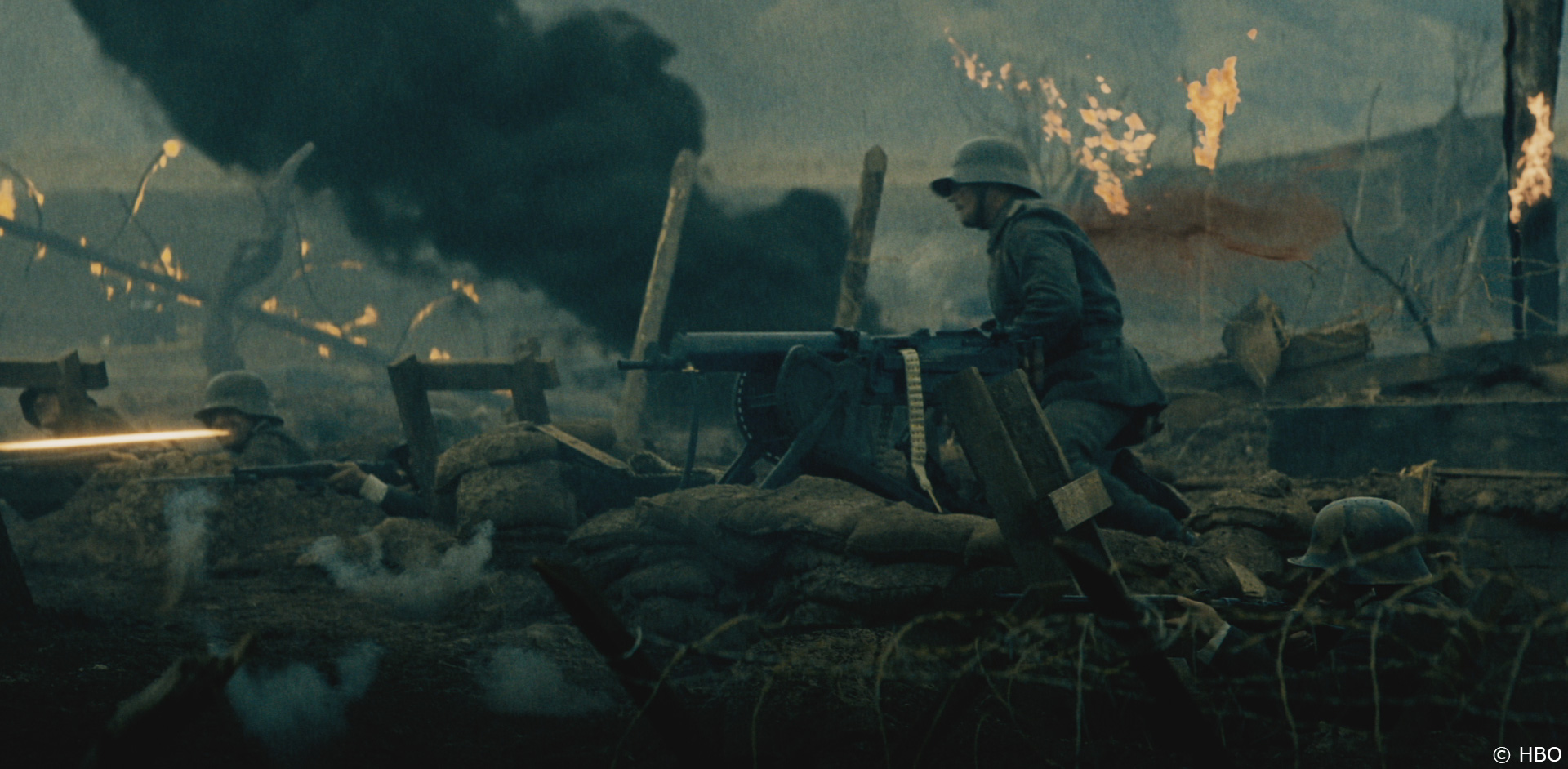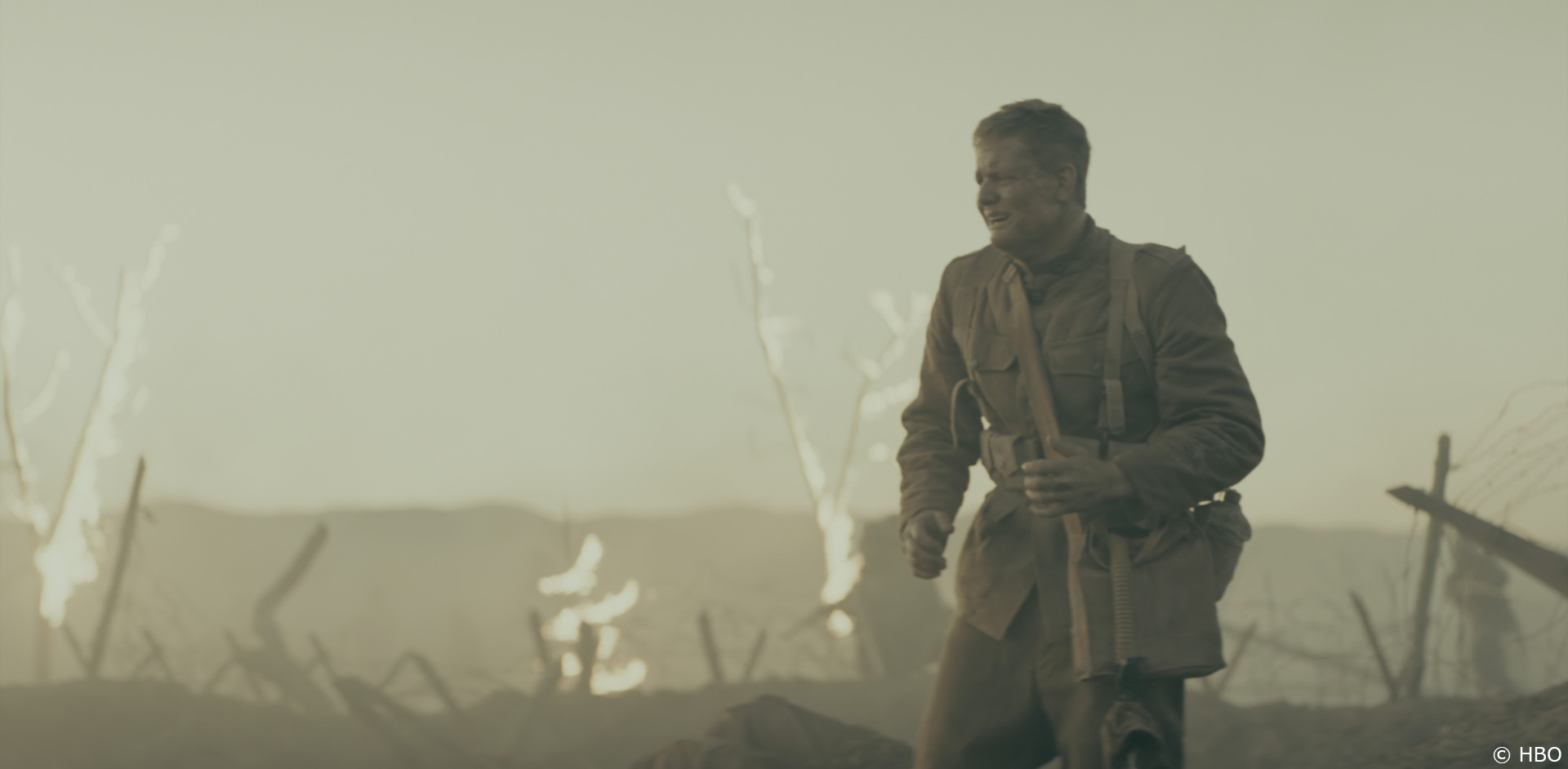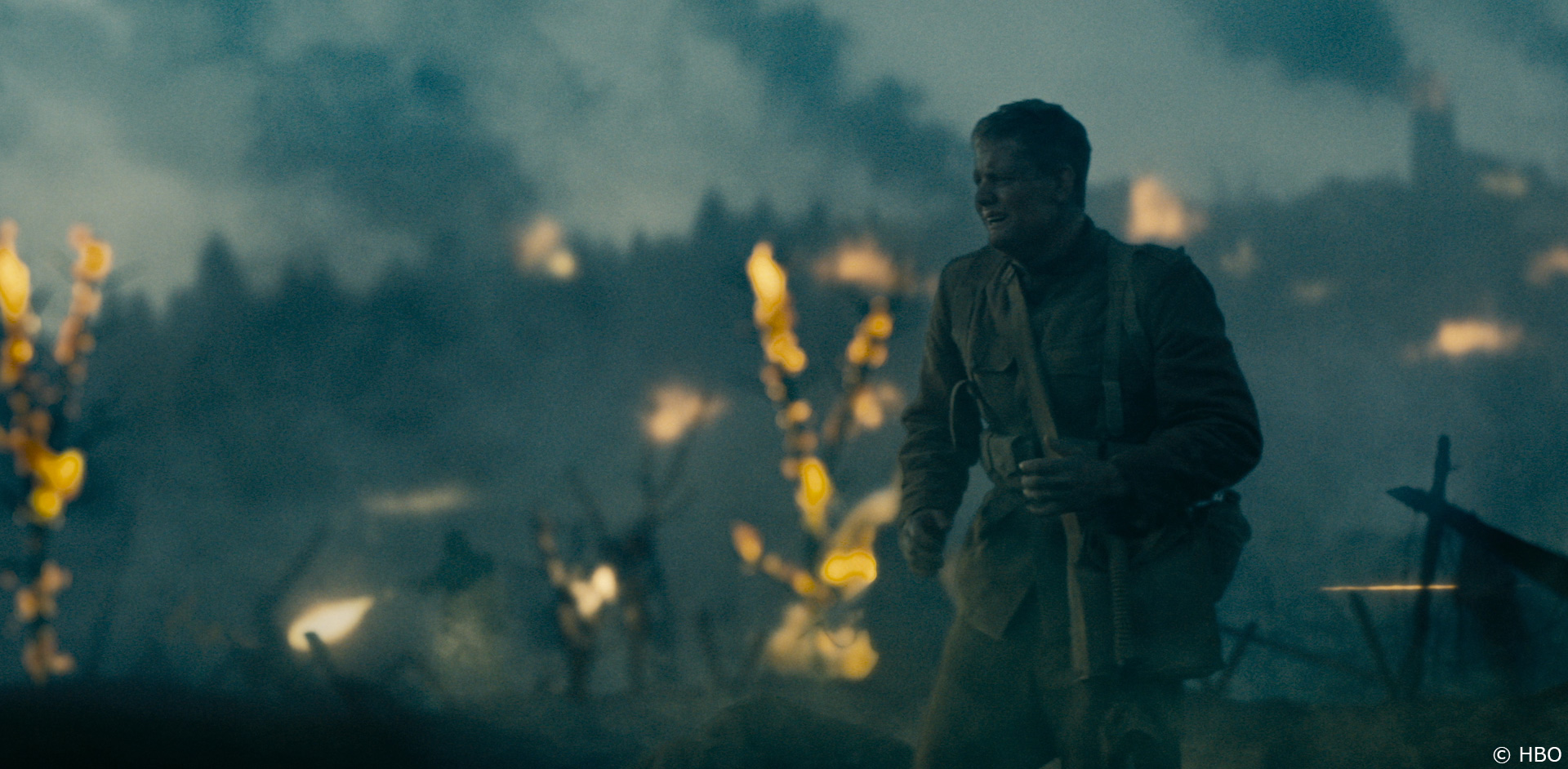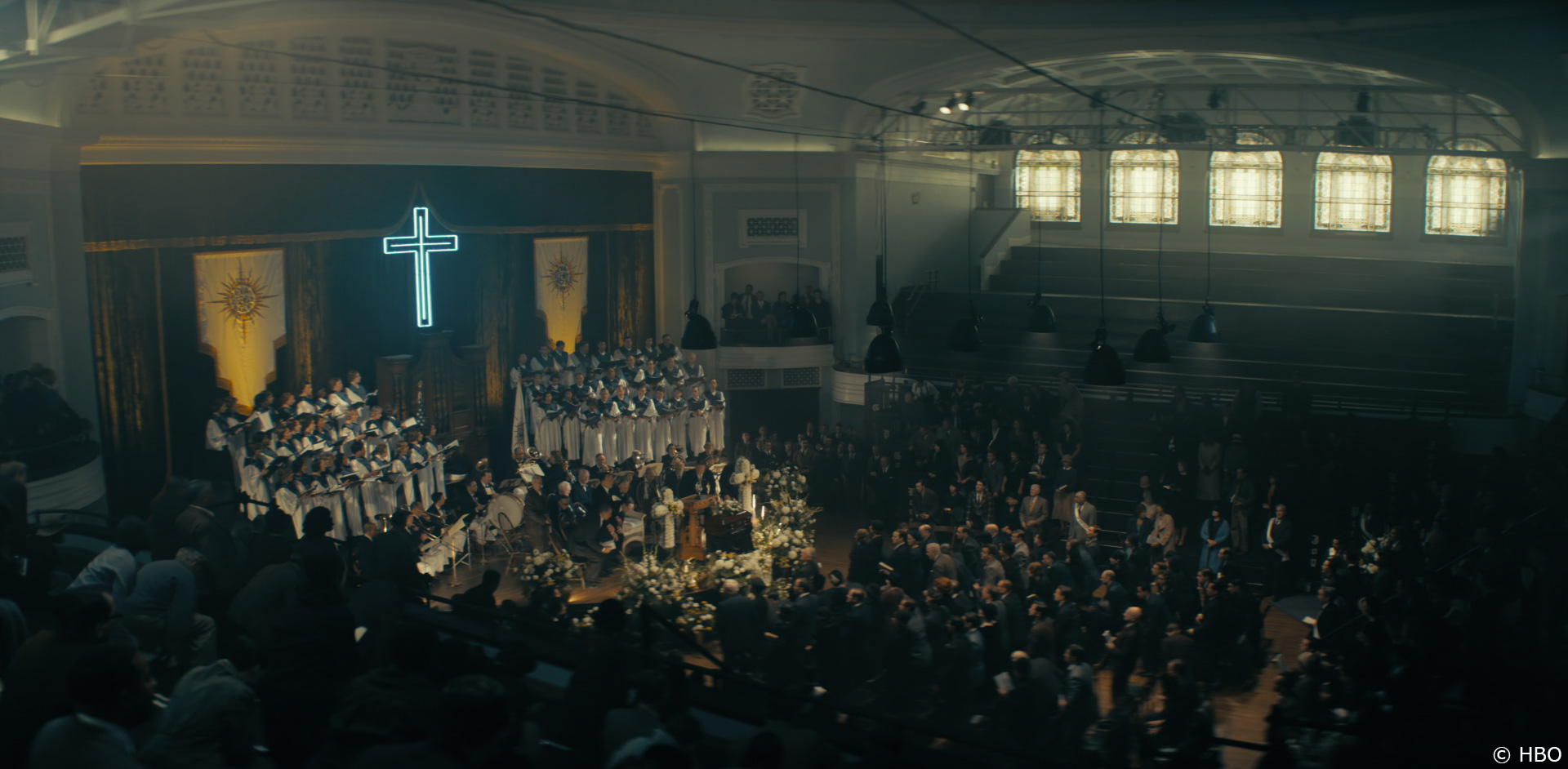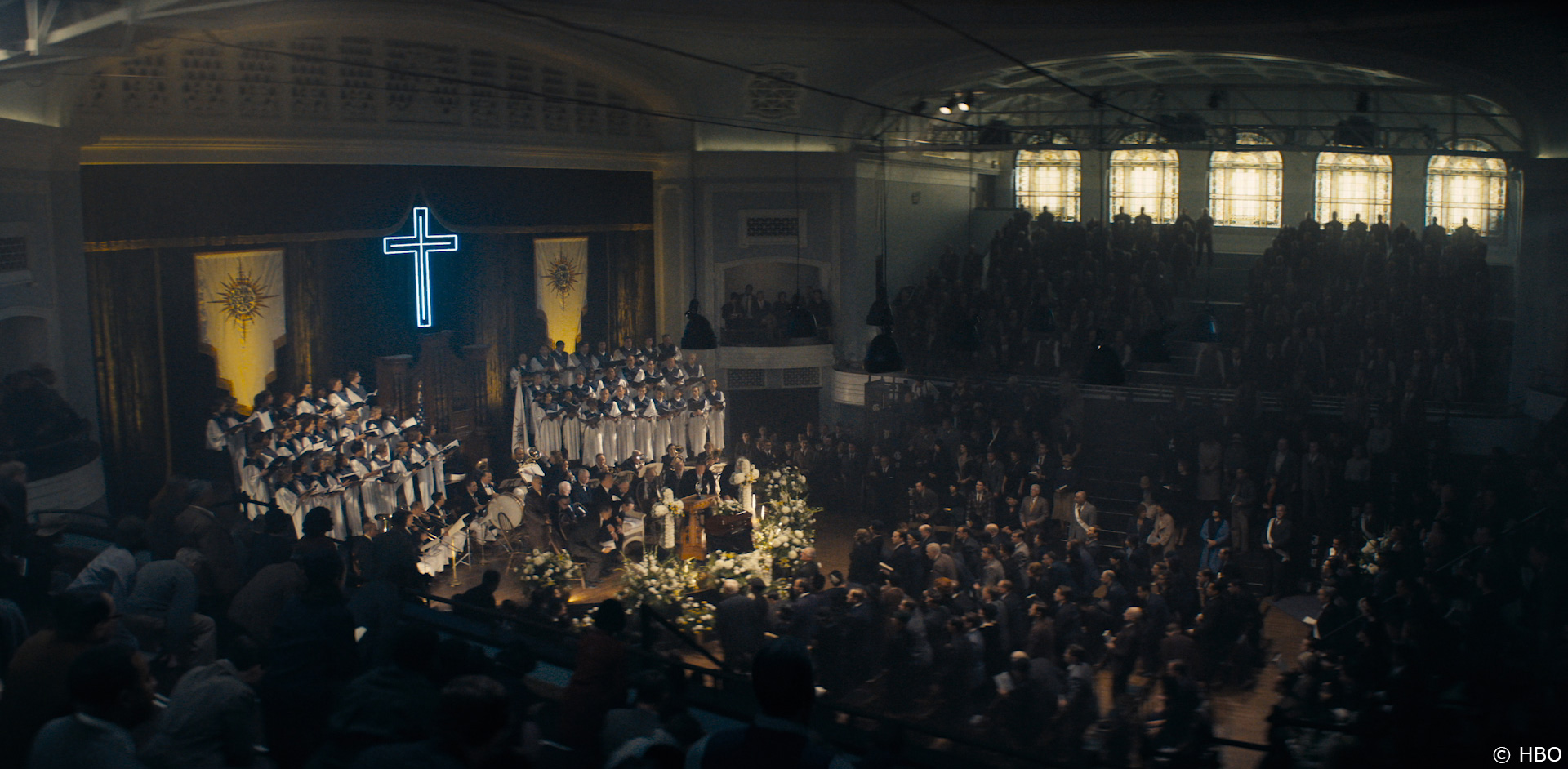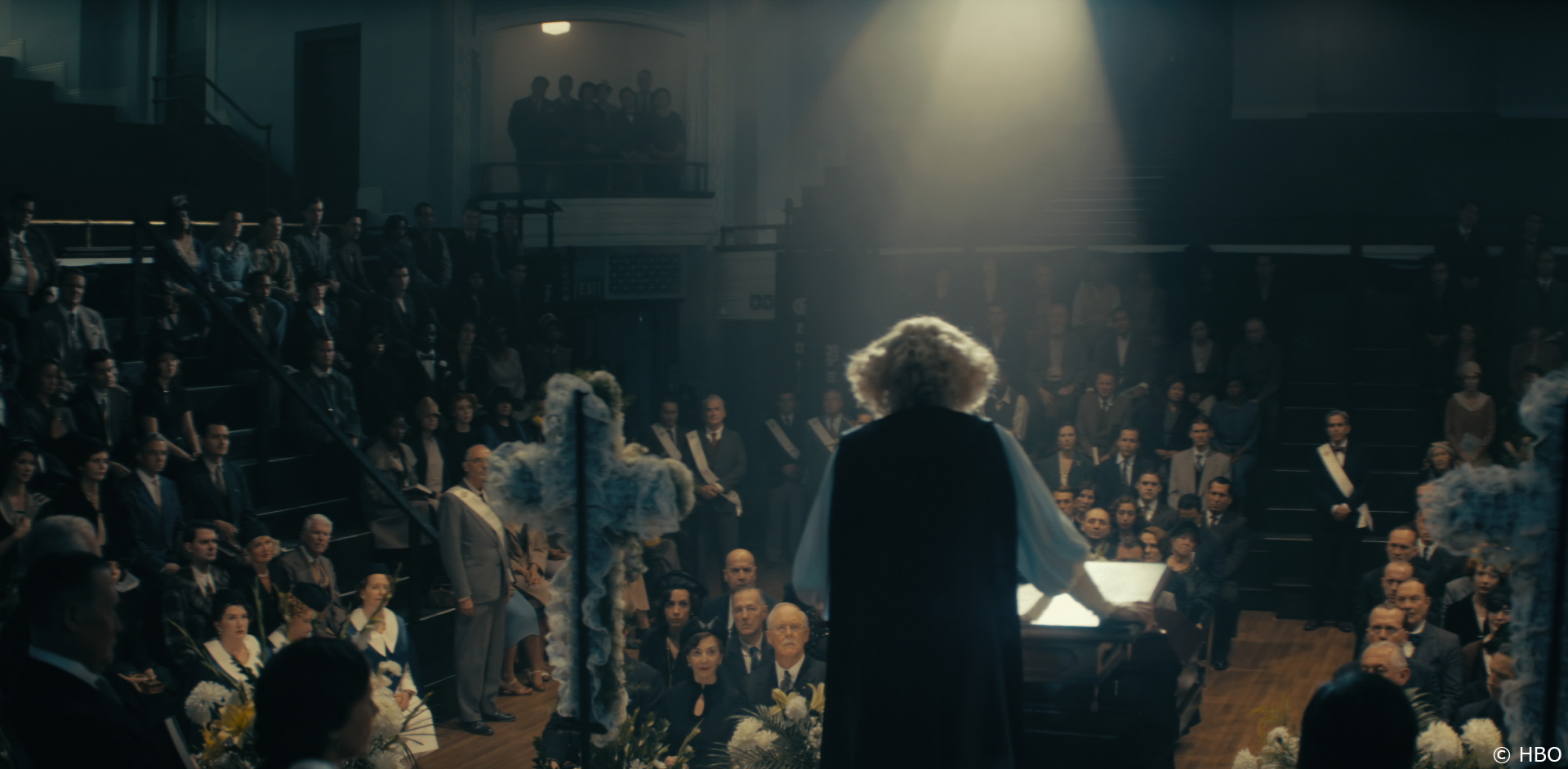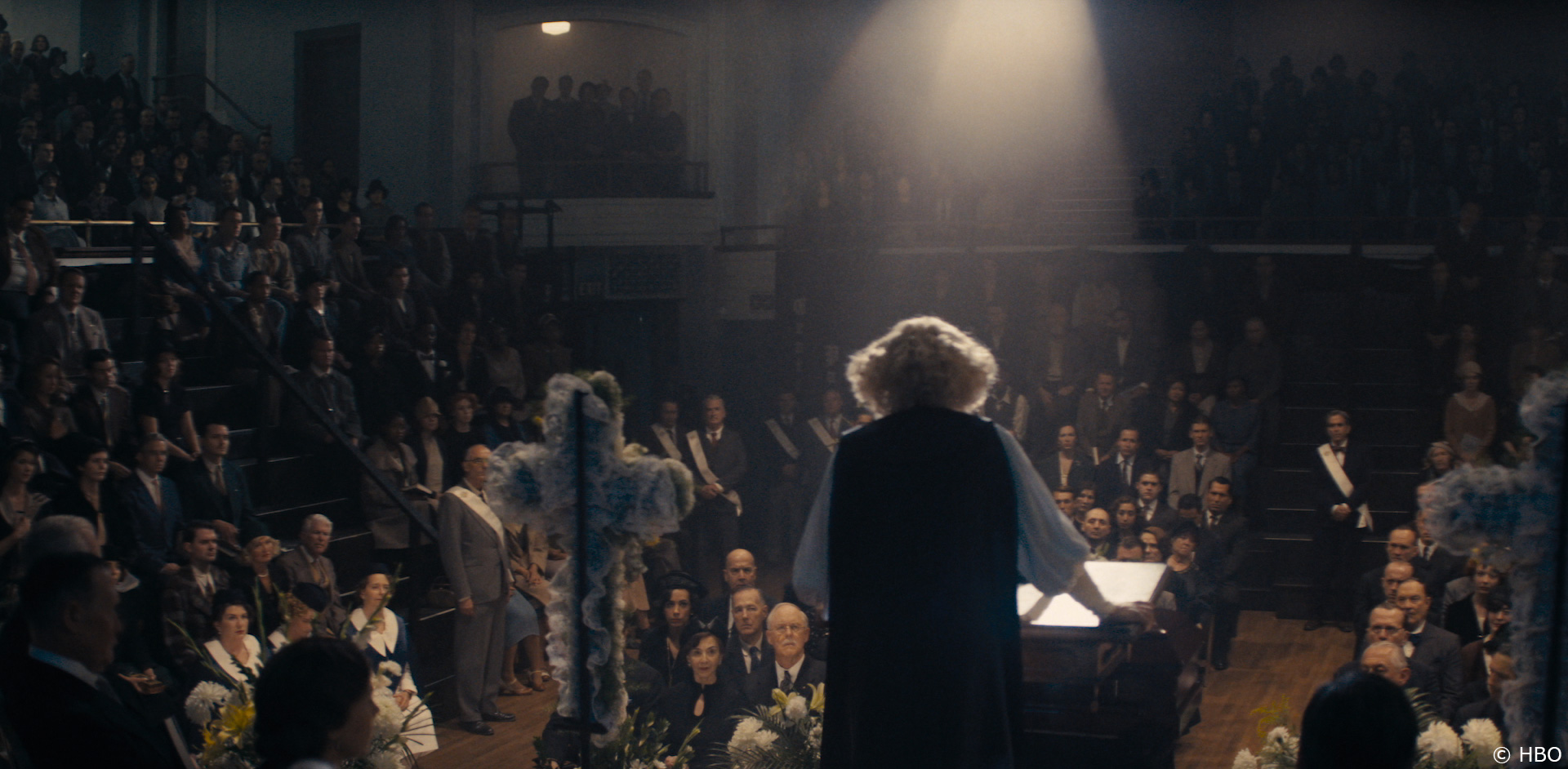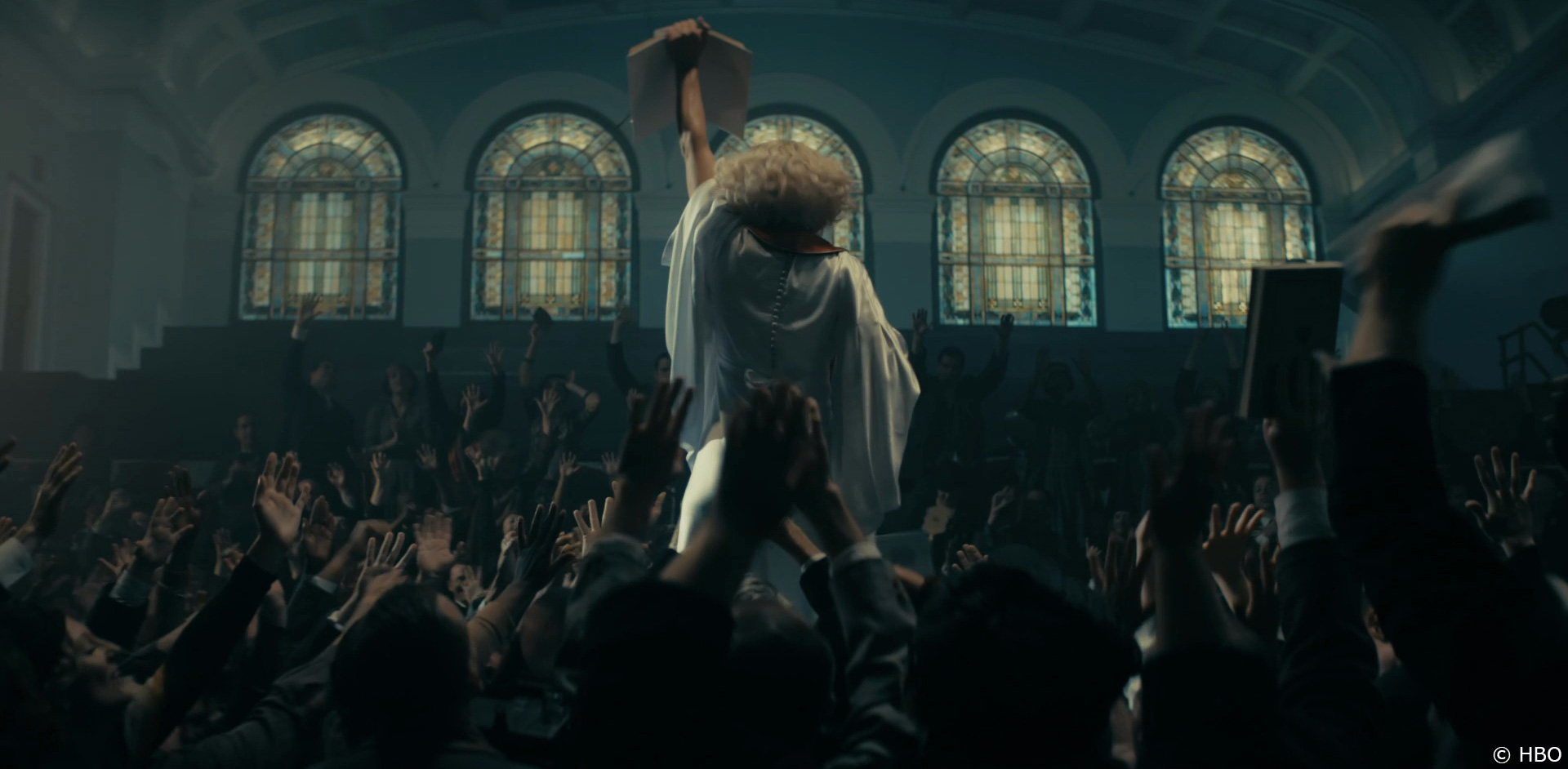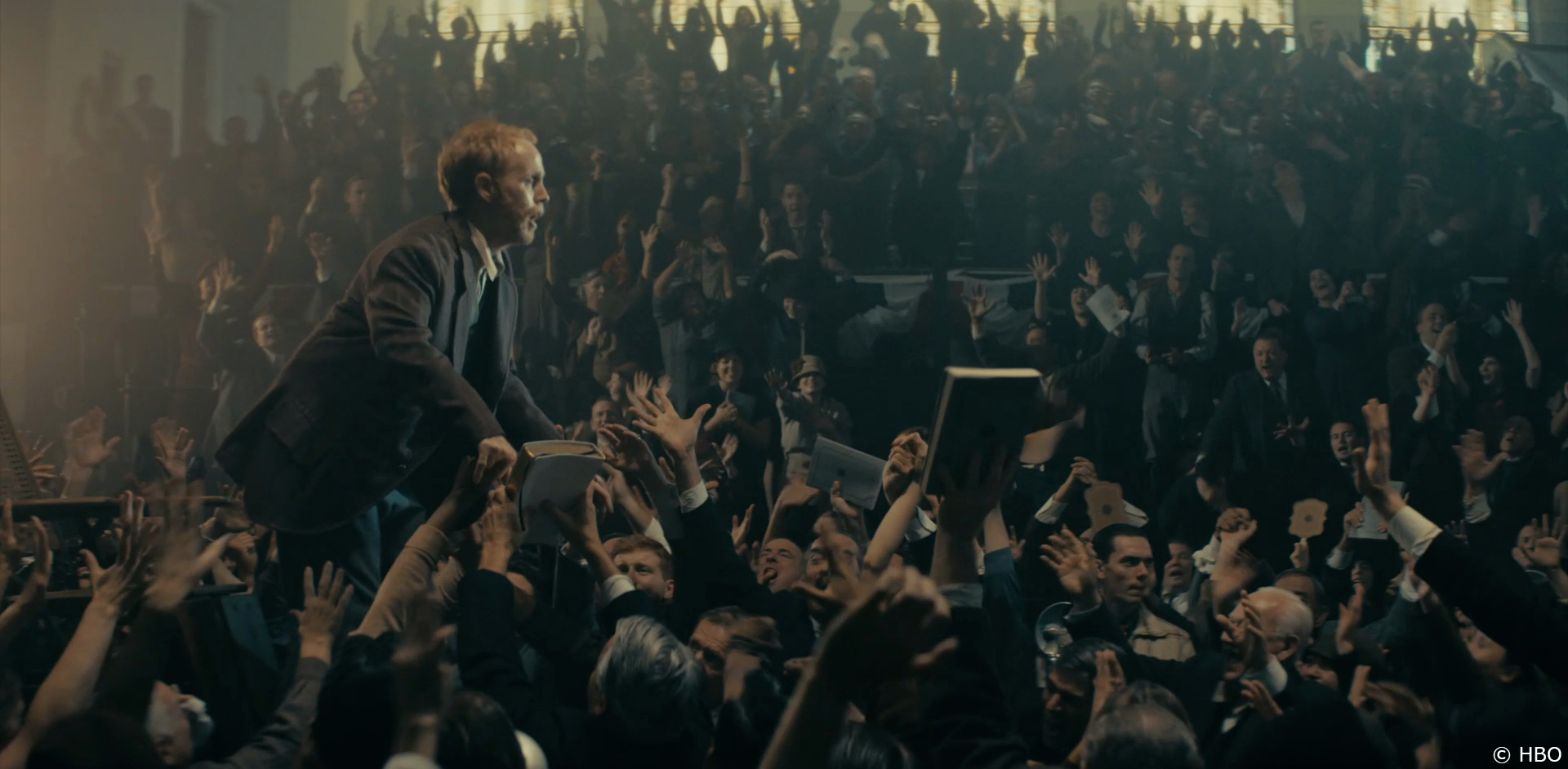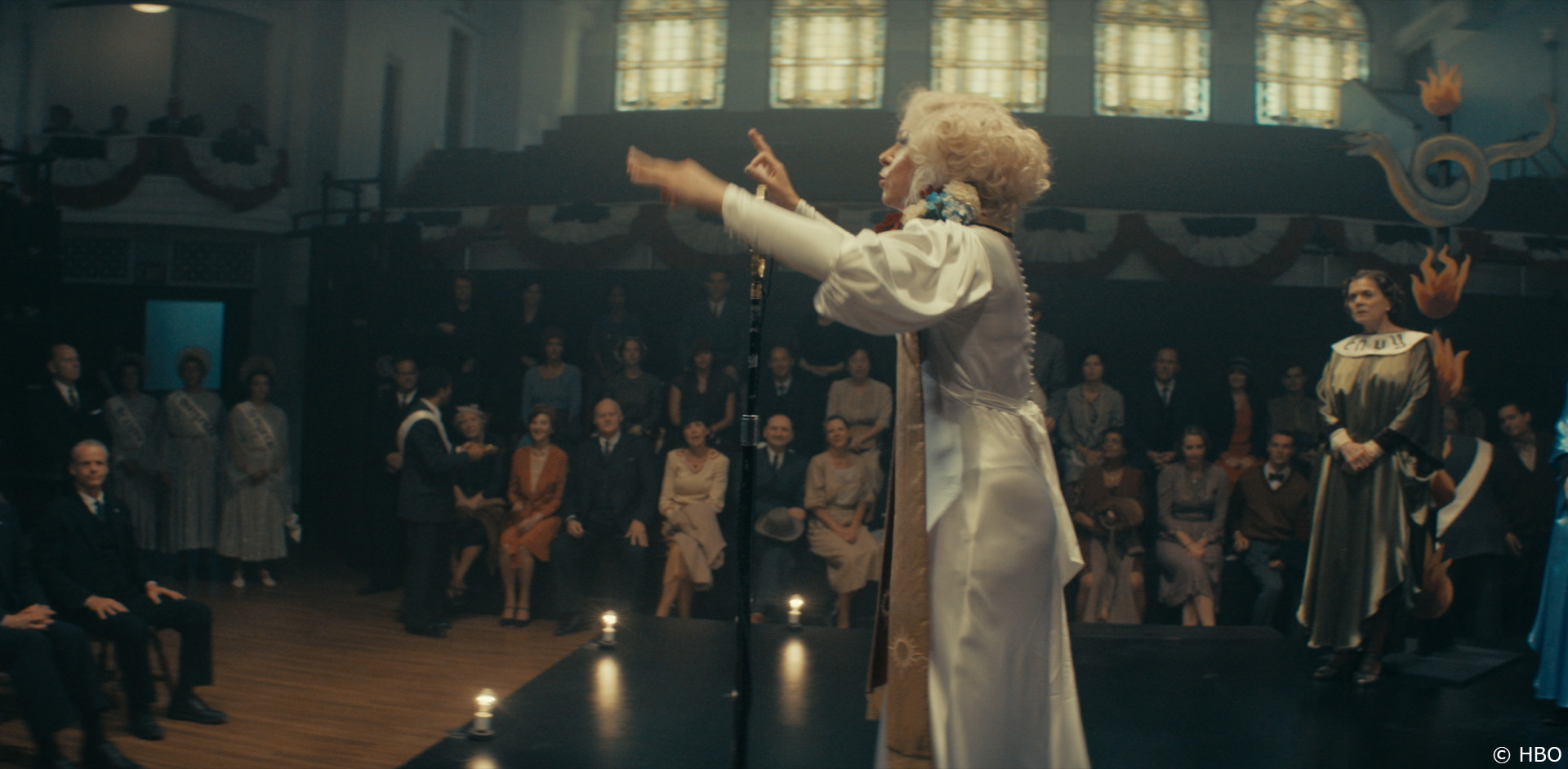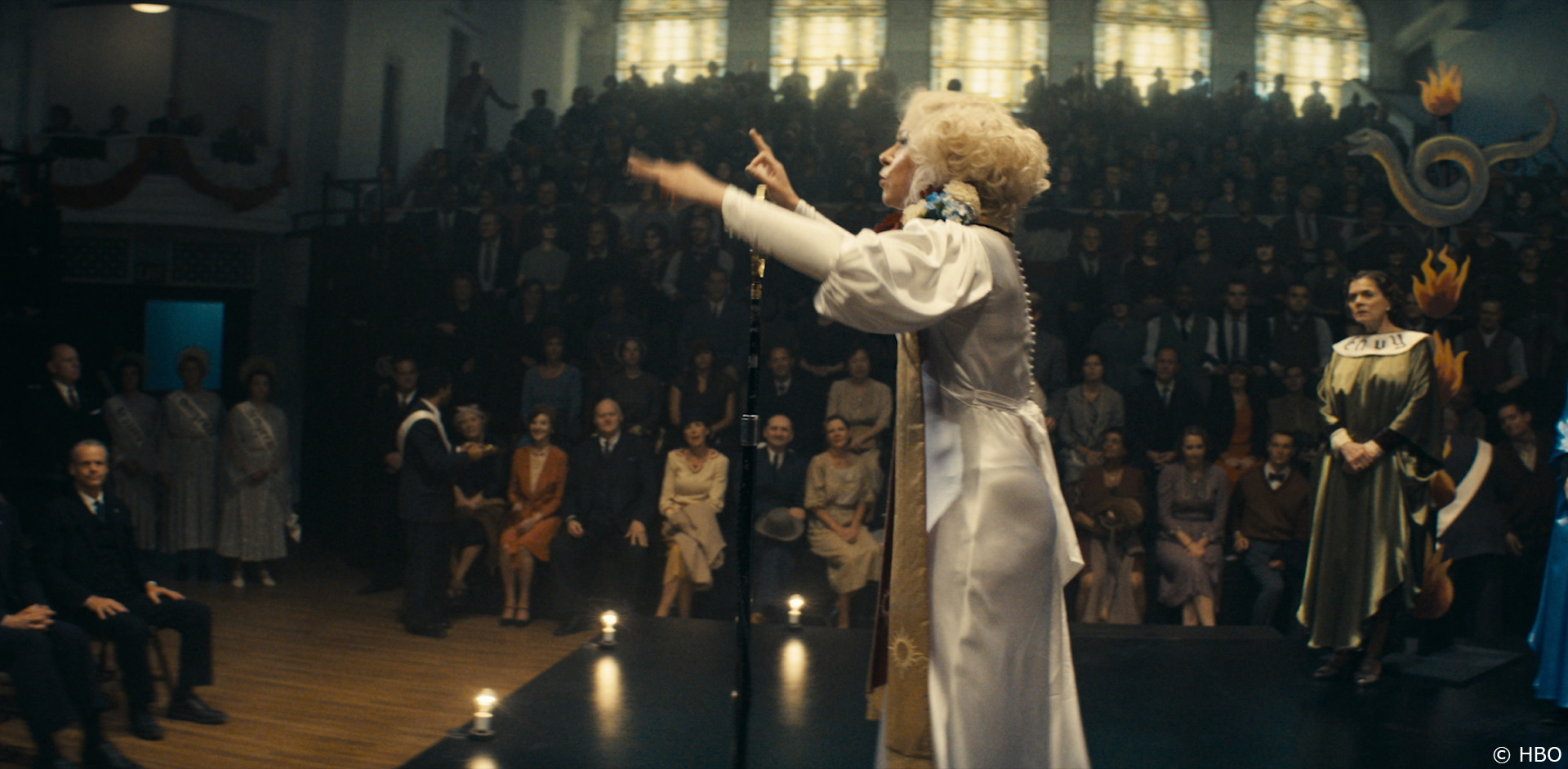Michael Shelton has worked in many areas of visual effects for over 30 years. He joins the Pixomondo teams in 2017. As a VFX supervisor, he has worked on projects such as HERE AND NOW, MARY POPPINS RETURNS and GOLIATH.
What is your background?
I have been fortunate to have worked in a wide variety of fields under the umbrella of Visual Effects over the last nearly three decades. My working journey has included stints in stop motion animation, miniature building, and photography, optical fx work, and all manner of practical makeup, and creature work before entering into the computer-generated realm of things. I have always loved animation and worked for several years in traditional 2d cel animation. If I had to sum it up, my background is that I’m a well worn Swiss Army knife.
How did you and Pixomondo get involved on this show?
We were originally approached, if I recall correctly, in June of 2019 to do some tests for the WW1 sequence. It included layering smoke into the scenes to build a sense of depth, as well as removing or reducing the lighting of the bright California sun to make it feel like the French countryside. We took the test and ran with it, putting in some artillery explosions alongside the layered smoke, and it led to the conversation of digital crowds. Pixomondo, at that point, was deep into production on Roland Emmerich’s WWII film MIDWAY, which had substantial crowd needs, so we were well-suited to offer our help in that area.
How was the collaboration with VFX Supervisor Justin Ball?
Exceptional. Justin is an artist to the core and a great Supervisor, which made it truly feel like we were in the trenches together. When you work with someone whose knowledge is based on actual practical experience, it allows for a shorthand and everyone talking the same language. He understood the ups and downs from an artist’s perspective, and his feedback on our submissions reflected that. Solutions and praise throughout the whole wild ride.
How did you organize the work with your VFX Producer?
Like any show, it’s all about strengths and availability, both in assigning shots to artists, and utilizing any of our eight global Pixomondo studios. As a Supervisor at Pixomondo, I’m fortunate to have plenty of exceptional teams around the globe, so more often than not, it’s a case of something being more technically suited at one particular PXO location, or if there is a tax incentive to consider.
How did you split the work amongst the Pixomondo offices?
PERRY MASON was a project like no other in that we were caught in the middle of post-production by the pandemic, which forced us to pivot everything about how we were working. Initially, the entire project was based in Los Angeles, but we had to adjust to the new norm, which meant a global involvement, in order to adhere to our schedule.
What are the sequences made by Pixomondo?
Out of the eight episodes of Season One, Pixomondo was involved in six of them to varying degrees. The WW1 sequence was entirely Pixomondo’s, as was all the interior crowd shots for the Radiant Assembly of God scenes.
How did you approach this big World War 1 sequence?
Enthusiastically! We knew when we were awarded the sequence, it was going to be huge. Justin Ball gave us great reference and direction and just set us loose. There were several important issues to get sorted out that would drive the entire sequence, so we focused on those first. They included a methodology for handling smoke layering as well as neutralizing highlights caused by the Santa Clarita (California) sun, and replacing it with a more ambient feel to the world. We devoted quite a bit of time detailing out roto specifics, really getting into the minutiae of ground objects, people running from foreground into background, and reverse. We worked and reworked our approach several times before finding solid footing. The explosions, tracer fire, matte-paintings and cg work ended up being the easiest part in comparison.
Where did they film the WW1 shots?
WW1 was filmed in Santa Clarita, California, at a location called Mystery Mesa.
How did you extend the location?
There were two parts to this. First, we needed to lower the mountains and hills down to almost the horizon level as the French countryside where the battle took place was fairly flat, except for the town of Montfaucon, which was the prize in this battle. The other part was creating the hillside that made up the outskirts of Montfaucon, and extending the German trench lines past where the practical set ended. All of this was accomplished through matte-paintings, and full CG set extensions. The ground, the trenches, and machine gun emplacements were all part of the build. We also populated the extended areas with more soldiers to give a sense of scale to the battle.
How did you work with the SFX and stunt teams?
The production SFX and stunt teams had a solid game plan, and we were there to help in any way we could. We knew there would be some practical smoke and explosions which would require further seaming into our post elements, so we pretty much were prepared when the footage came.
How did you create the various FX elements such as fire, muzzle flashes, …?
Like most VFX studios, we have a pretty extensive library of filmed elements we draw from. Muzzle flashes and bullet impacts are pretty standard things these days. However, we did create the mustard gas entirely in Houdini as it needed to be art-directed for speed and motion to work within the edit. Justin saw the gas as a character, which was a helpful way of looking at it, and gave Khi Kim, our FX lead, a framework to his approach.
The cinematography for the WW1 sequence is really strong. How does that affect your work?
It’s everything. Cinematography creates the frame from which you work inside of. It goes beyond just having pretty pictures to look at; it’s the fundamental art of it all – composition and timing. A DP who knows how to frame for something that isn’t there, and who has the ability to see beyond their part in the process, sets us all up for success.
How did you enhance the crowd for the Radiant Assembly of God?
Pixomondo was tasked with adding rows of crowds beyond what was possible to capture on set. These included ushers walking up and down the aisles with collection plates, and adding density in areas that were already nearly full of people. There were roughly 300 extras on any given day during principal photography, and to achieve the needed density of people, we ended up adding roughly 3-4 times that in the widest shots.
Can you tell us more about the crowd animation?
The crowd animation was primarily all motion capture done in-house with character animation support to help where needed. During principal photography I shot quite a lot of reference of the congregation throughout the various scenes so we had a reference library of motion. From there, our Previs Supervisor Tefft Smith put on the suit and worked through a series of motions that we started with. The approach gave us the flexibility to return to our mocap set-up and refine as needed. CG Supervisor Dan Smiczek oversaw the bulk of the capture sessions and was integral in our workflow.
How did you create the various doubles?
All of the doubles started off as full body scans that were then used as a base for creating the production model. We brought a mobile scanning truck to set and started pulling in extras who were idle and running them through the process. We wanted to leave with more scans then we could use. From there, Pixomondo’s CG and Lighting Supervisor Matthew Maude created a workflow to help multiply a handful of base meshes into a decent variety of characters without us having to model and create each one from scratch. In the end, we had roughly 2500 possible character variations. Additionally, Matthew set up the lighting to achieve the level of realism needed.
Which sequence or shot was the most challenging?
There was a 2000 frame shot that we created a full hair simulation on one of the main characters to solve an issue with a wig. It was months in the making, and much blood and tears were shed. It’s the kind of shot you do stand-alone articles about…
Is there something specific that gives you some really short nights?
Not so much when I’m in the studio, but definitely when I’m preparing for a shoot. I spend quite a bit of time coming up with contingency plans for things, like most plans, regardless of how bulletproof they seem to be, go out the door to some degree the moment you get to set. So I run through scenarios to be as prepared as possible, ripping apart my methodology and reassembling it to make sure it is still logical.
What is your favorite shot or sequence?
I’m really proud of how the WW1 sequence turned out. Justin was great in giving us the green light to make that sequence ours, and the team responded.
What is your best memory of this show?
So many. One moment in time that stands out is when I saw the first greyscale render of the hero digi double shot, which happened to be the very first shot inside the Radiant Assembly gathering. It’s a long sweeping camera move that shows the hall’s entire inside and was our most populated scene. Matthew’s lighting, along with the comp integration by our very talented senior compositor Tun-En Chen turned what would normally be a playblast into something entirely different. That’s when it got exciting.
How long have you worked on this show?
From our first meeting to final delivery of last shot, it was nearly a year.
What’s the VFX shots count?
Pixomondo’s shot count was approximately 240 shots.
What was the size of your team?
At our peak, we were probably around 40 artists.
What is your next project?
I am the VFX Supervisor for Amazon Studio’s GOLIATH, and we are prepping to return to shooting Season 4.
What are the four movies that gave you the passion for cinema?
1. THE SEVENTH VOYAGE OF SINBAD
2. ALIEN
3. HEAVY METAL
4. THE EMPIRE STRIKES BACK
A big thanks for your time.
PERRY MASON – VFX BREAKDOWN – PIXOMONDO
WANT TO KNOW MORE?
Pixomondo: Official website of Pixomondo.
Justin Ball: My interview of Overall VFX Supervisor Justin Ball about his work on PERRY MASON.
© Vincent Frei – The Art of VFX – 2020

